Introduction to the taste characteristics of the course of washing Yega Xuefei in Ethiopia
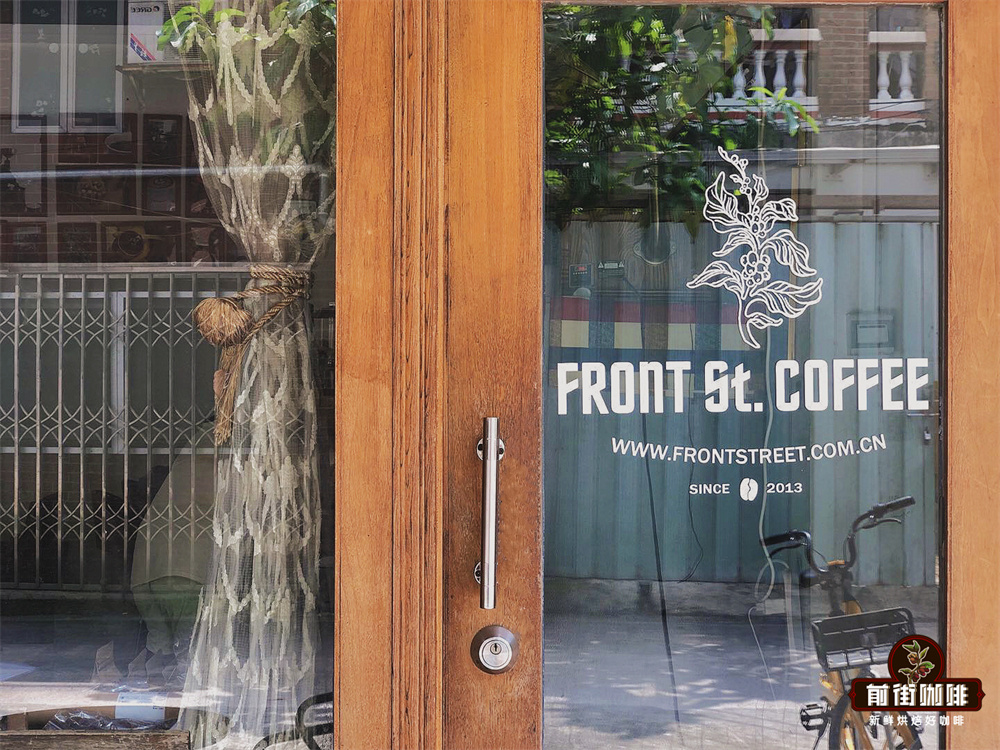
From which producing area did you get to know the method of washing coffee beans? It must have emerged in the hearts of many people at this time. After the Ethiopian government introduced washing treatment to improve the quality of coffee beans from Central and South America in the 1970s, the small town of Yejasuefi, which still belonged to the Sidamo area at that time, with the method of washing treatment, showed bright acidity, white flower aroma and tea feeling, and suddenly became the heart of harvesting a lot of coffee glutton! Qianjie believes that washing can best represent the basic tonality of a coffee bean, while washing can best reflect the quality of coffee beans. What is washing treatment?
All treatments are inseparable from exposure to drying in the sun. Coffee fruit contains a lot of sugar, if exposed to high temperature for a long time, the sugar inside is easy to ferment, so that coffee beans produce pungent fermentation acid. At the same time, the sun treatment needs to watch the day to eat, in case of wet season or continuous rain, coffee fruit does not have time to dry / dry uneven, it will begin to rot, coffee beans produce rotten taste.
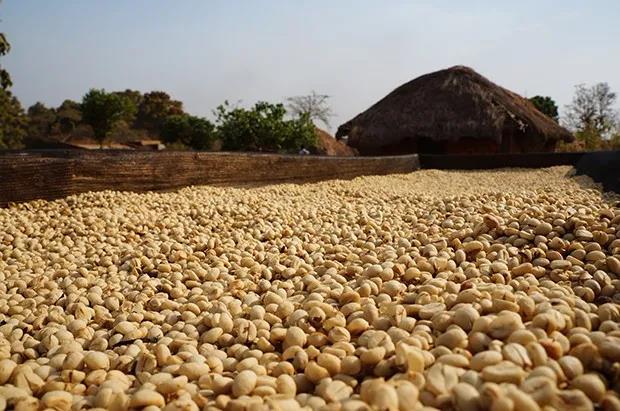
In order to solve this problem, people began to try to remove the pectin from the peel and pulp through the water source to reduce the water content of the coffee fruit before drying, so the sun drying time will be greatly shortened, so there is a washing method. Before honey treatment was popular in Costa Rica, it was mainly water washing treatment. Costa Rica made great efforts to develop the coffee planting industry in 1821 and began washing treatment in 1830. In 1905, that is, more than 100 years ago, there are more than 200 washing treatment plants in Costa Rica. Washing process / step
① cleaning / collection / flotation / bleaching
The coffee fruit is actually sent to the processing plant to be weighed within 6-12 hours after picking, and then soaked and cleaned in order to pick out the "little villains" who float on the surface due to insufficient density and clean up the sand and gravel of the branches.
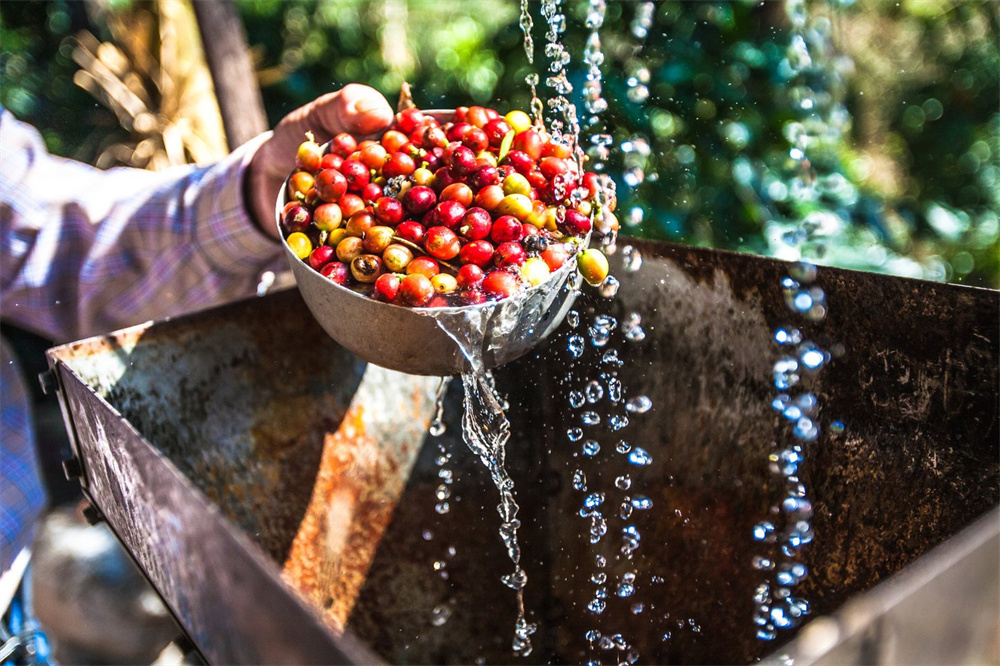
Peel and pulp of ②
Use a machine to remove the skin and pulp, leaving only coffee beans wrapped in parchment. At this time, there is also a layer of mucous membrane on the outside of the beans, so it is necessary to produce acidity through fermentation to make the mucous membrane fall off.
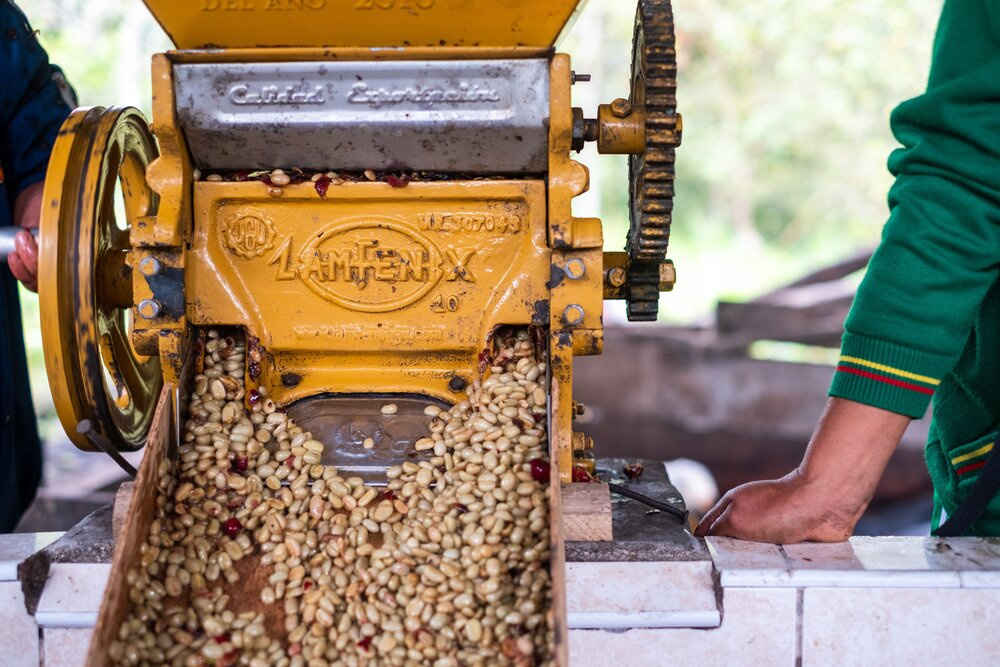
③ fermentation & degumming
This mucous membrane is the pectin part. The mucus in the pectin part has strong adhesion and is not easy to remove, so it needs to be placed in a clean sink for about 18-36 hours to allow pectin fermentation to produce acidic decomposition mucus.
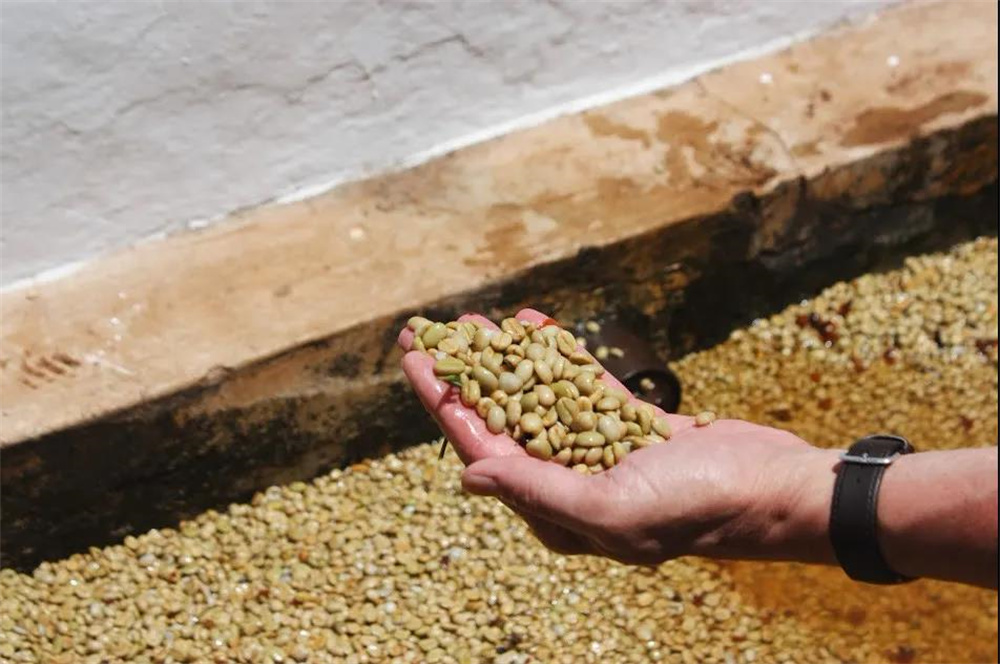
④ cleaning pectin
After the mucus decomposes, a small amount of water is injected and stirred, causing the pectin decomposition of coffee beans to fall off. After cleaning, you will get coffee beans wrapped in parchment and hard skin.
⑤ sun drying
After cleaning, defective coffee beans will be selected and then laid on the cement floor / tarp / drying bed for sun exposure. The drying time depends on the weather, and the general drying time varies from 5 to 14 days. The water content of dried coffee beans will be reduced from 55% to 11%.
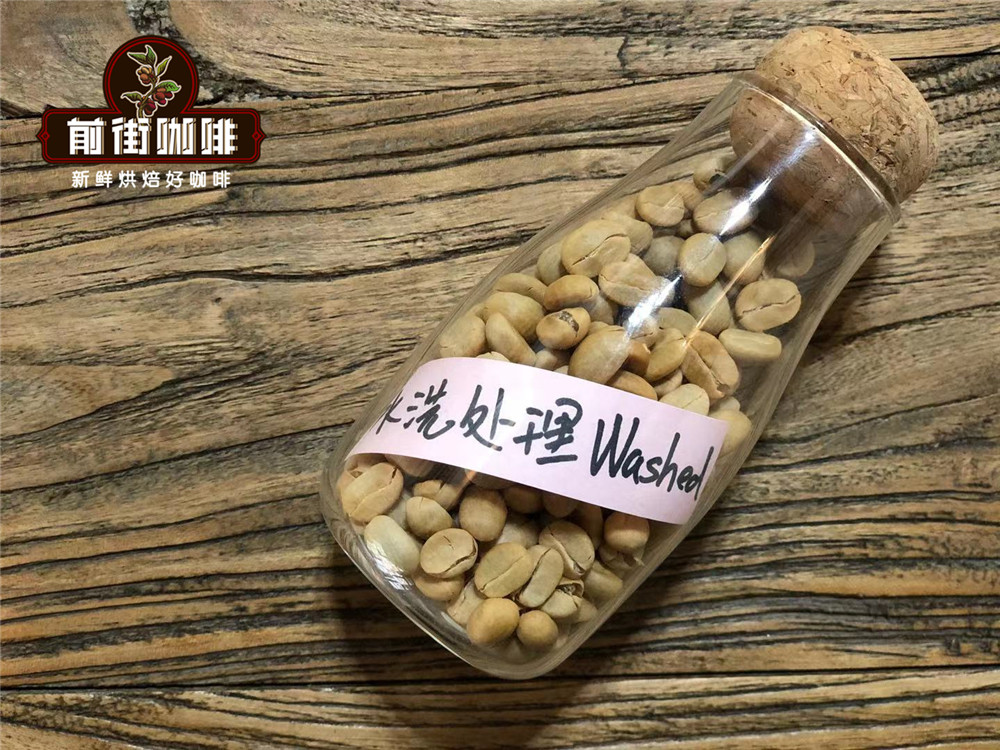
⑥ storage
After drying, the coffee beans are stored with parchment, which is removed before the coffee beans are exported. Characteristics of flavor and taste of water washing treatment
Because the "little bad guys" are roughly picked out before all the treatment steps, and then the defective beans are picked again before sun drying, plus the fermentation process in the pool makes the coffee beans produce brighter acidity. Therefore, Qianjie believes that the biggest flavor feature of the washing method is the bright acidity of the fruit, and the coffee is clean and fresh as a whole and rich in layers.
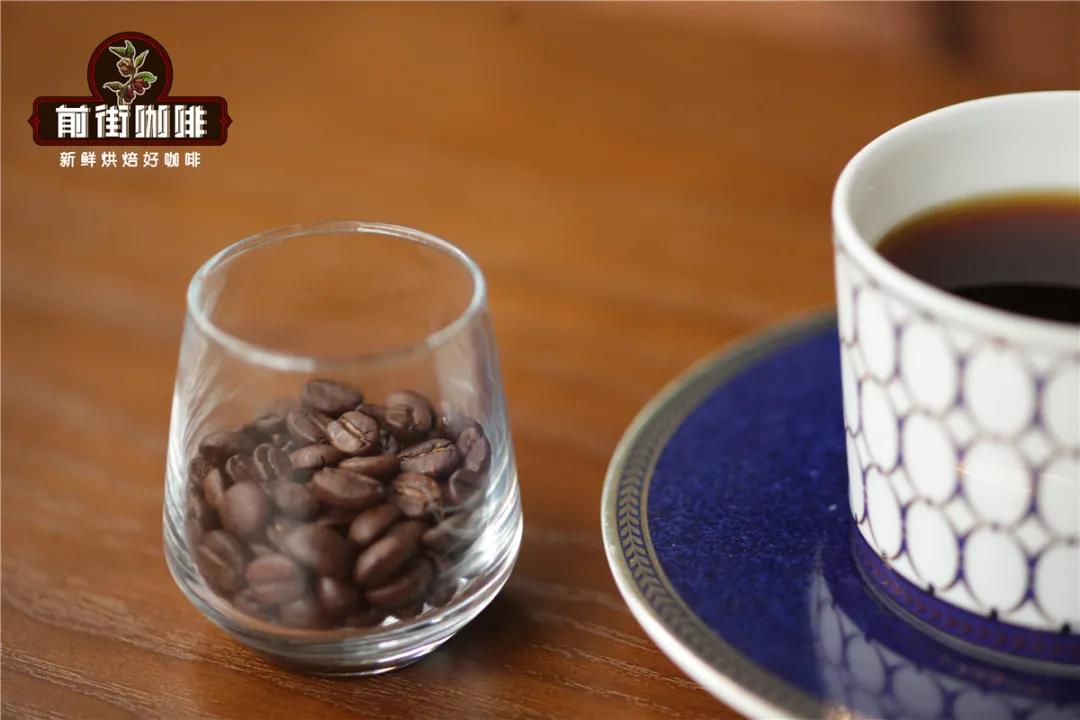
How can water wash Yejia Xuefei taste better?
Grinding degree Qianjie recommended medium fine grinding degree (the pass rate of Chinese standard No. 20 screen is 78%). Too thick to extract mellow substances, brewed coffee will appear thin. Too fine is easy to be over-extracted at high water temperature, and the coffee brewed is prone to bitterness. The water temperature can be 90-91 ℃, which is more fully reflected by bright fruit acid. Due to the high acid quality, so the cooking ratio can be used at 1:16 to dilute the acid concentration, so that other light flavors can be reflected (such as flower-scented tea). It is recommended to use staged water injection in front of the cooking technique, so that different flavor substances can show better themselves when the powder layer heats up in stages.
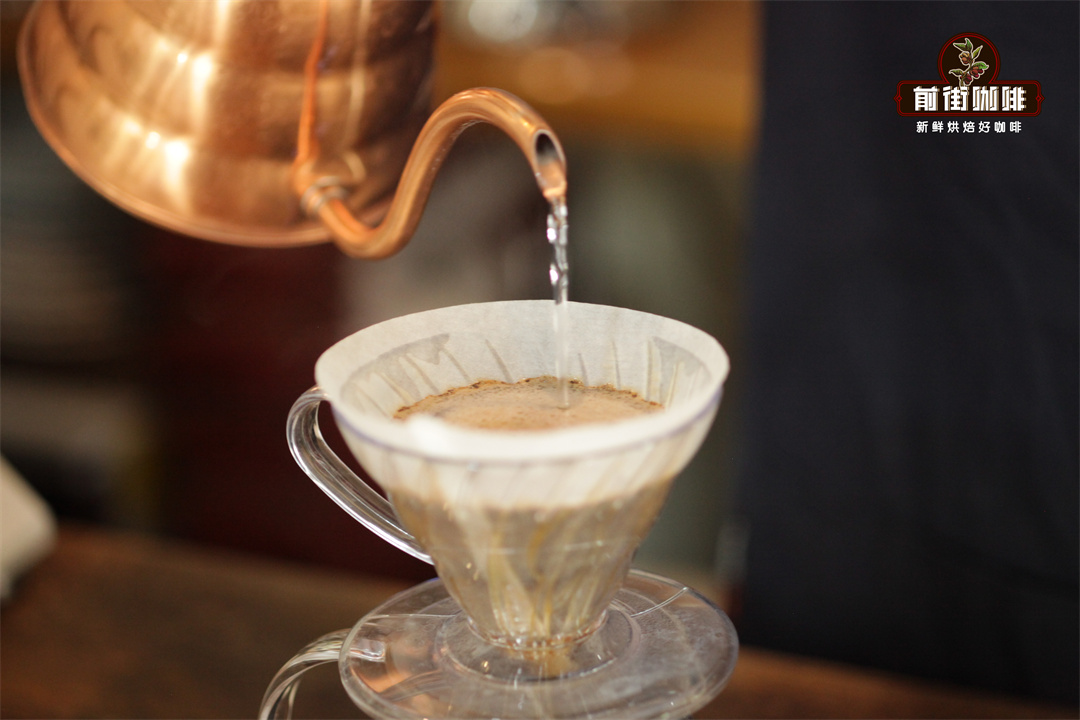
Brewing method: first inject 30g of water for steaming for 30 seconds, at this time the coffee expands more plump. The center of the second section is filled with 120g water in a small circle. The water injection height is 5cm, the strength is gentle, and it is not necessary to stir. When the water level drops to 1 stroke 2 of the silt layer, the third stage of water injection begins, and the water injection in this section gently circles outward from the center, and the flow is about 4g/s until the injection is finished at 240g. After all the coffee liquid in the filter cup is dripped, the extraction is finished, and the time is 2 minutes 39 percent 00 "- 2 percent 39 percent 10".
Important Notice :
前街咖啡 FrontStreet Coffee has moved to new addredd:
FrontStreet Coffee Address: 315,Donghua East Road,GuangZhou
Tel:020 38364473
- Prev
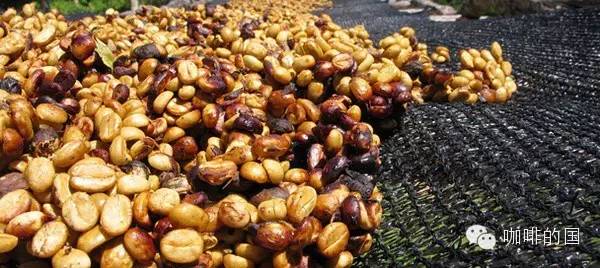
Coffee treatment what is Honey treatment Niagara Jim Molina Manor Honey treatment Red bourbon Fine products
The so-called honey treatment (Miel Process in Spanish) refers to the process of making raw beans by sun-drying with mucous membranes. After the outer pulp of the coffee bean is removed, there will be a layer of sticky jelly. The traditional method of washing is to wash it off with clean water, but because of the limitation of water resources in some high-altitude areas, there is this way of direct drying. Honey treatment process capacity
- Next
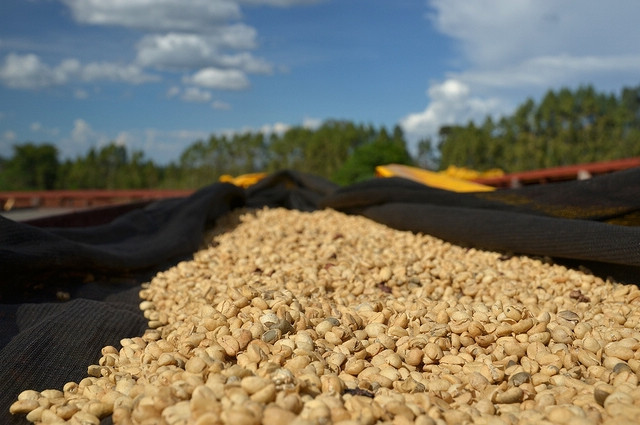
What is Solar treatment? Guava Plain Manor in Guatemala New Oriental region
Sun drying: the sun drying method is also called natural drying because it uses natural sunlight to dry the fruits and raw beans of coffee. Due to the use of artificial and natural treatment methods in the process, the sun-cured beans look irregular and unflattering in appearance. 1. Choose beans: put the harvested fruit in the water tank, and the ripe fruit will sink, while the unripe and overripe fruit
Related
- Guji coffee producing area of Guji, Ethiopia: Humbela, Shakiso, Wulaga
- What is the most expensive variety of Qiloso in BOP multi-variety group?
- How to store the coffee beans bought home?
- Why are Yemeni coffee beans so rare now?
- Ethiopian Sidamo all Red Fruit Sun Sun Santa Vini Coffee beans
- SOE is mostly sour? What does it mean? Is it a single bean? what's the difference between it and Italian blending?
- Is Italian coffee beans suitable for making hand-brewed coffee?
- How to choose coffee beans when making cold coffee? What kind of coffee beans are suitable for making cold coffee?
- Just entered the pit to make coffee, what kind of coffee beans should be chosen?
- Can only Japan buy real Blue Mountain Coffee? What are authentic Jamaican Blue Mountain coffee beans?

